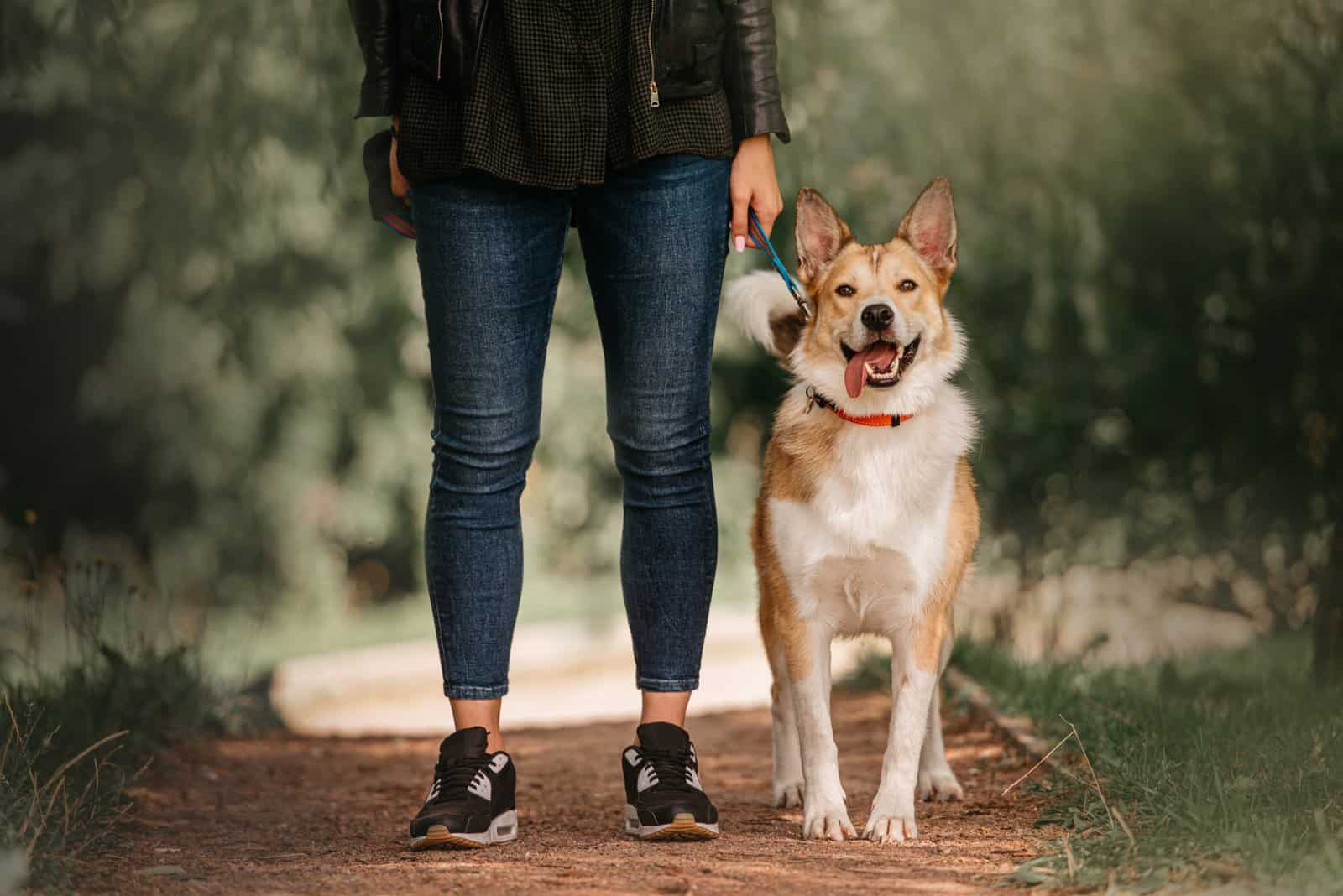Nail trimming and nail cutting are often stressful procedures that all pet owners must go through. Sometimes, pet nails are a real struggle if cut too short.
A damaged nail quick can make daily dog walks a real challenge.
Concerned dog owners often search for an answer to the question, “Can I walk my dog after cutting the quick?”
And, as much as I want to immediately respond with a simple yes or a no, there are some factors that make this question a bit difficult to answer.
Whether or not you can take your dog out for a walk after cutting the quick depends greatly on the severity of the cut.
Aside from that, it also depends on how much time has passed after the initial cut and the quality of care that was provided after this accident.
We’re going to go through all of the factors that can affect the daily walkies your dog loves going on.
I hope this article will help you recognize the severity of a damaged nail quick in dogs. After all, this will be the first step in answering your question!
Moreover, by understanding the basic anatomy of a dog’s nail, difficulties in nail trimming and nail cutting will be a thing of the past!
Dog’s Nails: What The Quick?!
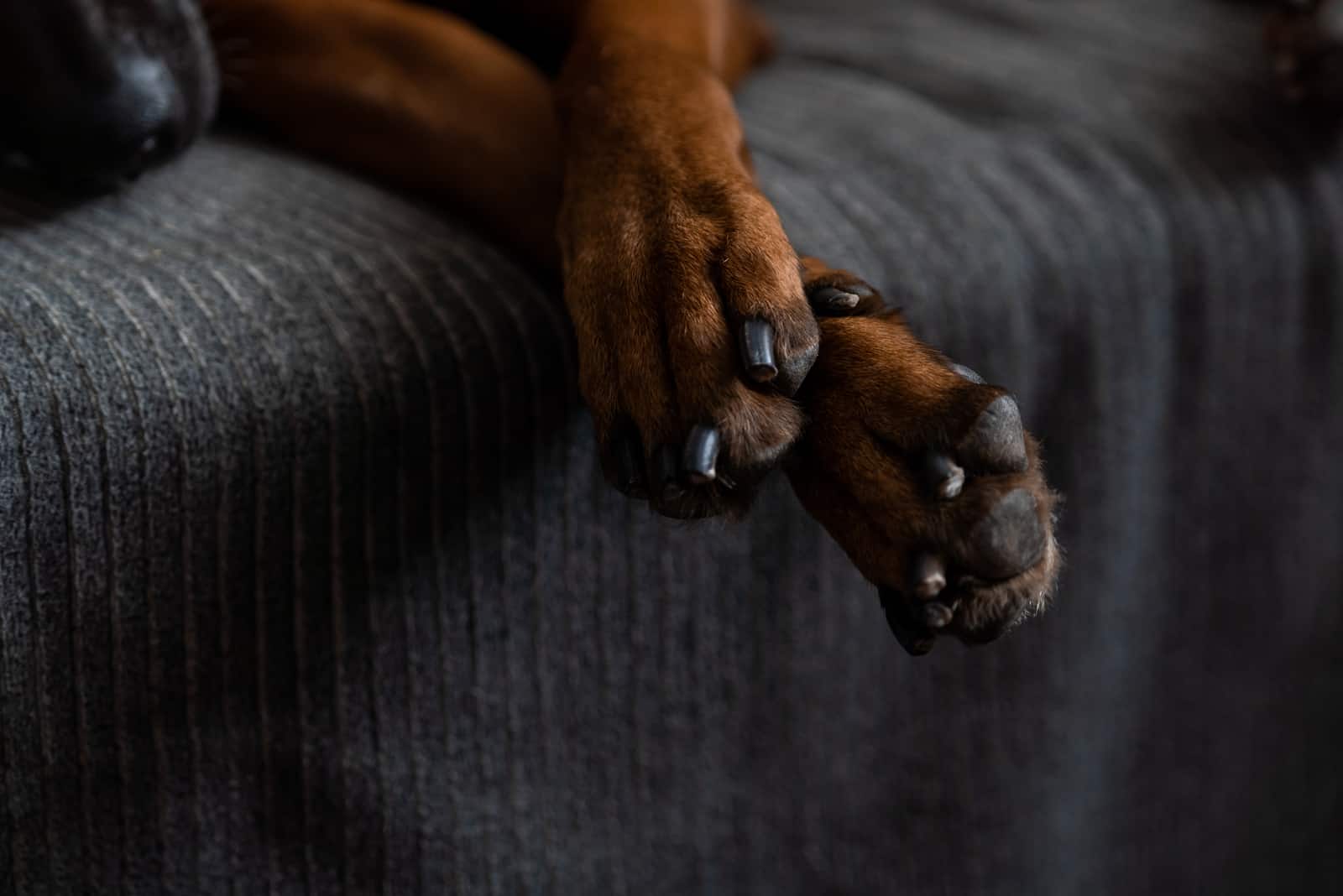
Alright, you are probably wondering what a quick is. To be honest, I am, too! Let’s dive into the anatomy of dog’s nails!
A dog’s nail consists of three main parts: the outer shell, the inner shell, and the live tissue – the quick.
The nail quick being the “live tissue” means that this particular part of the nail is made out of tiny blood vessels (capillaries). These blood vessels sit under the nail bed. Their main role is to provide nutrients through blood flow to support the growth of the nail.
So, to put it shortly, the dog’s quick is the blood supply of a nail. Blood vessels help your dog’s nails grow healthy. This basically means – no quick, no nail.
Dog Nail Growth Rate
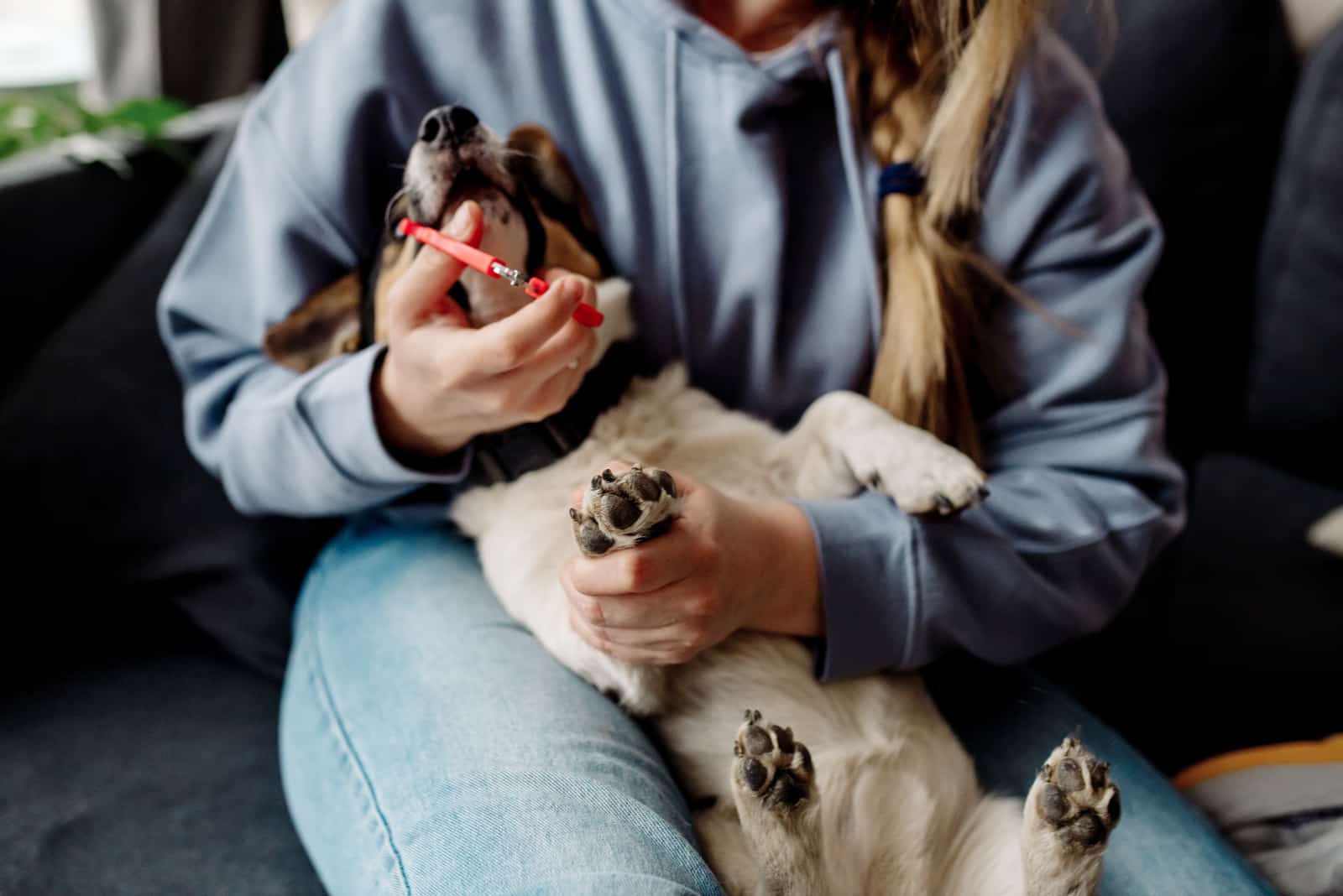
The growth rate of a dog’s nail depends on many things. Firstly, it depends on the dog itself; the dog breed and its age.
Secondly, the dog’s nail growth rate depends on the intake and metabolism of nutrients. Dogs get their vitamins that are crucial for healthy growth through high-quality dog food and supplements.
So, there’s no exact information about this. You’ll notice that there are dogs whose nails grow within a few weeks, while it takes about a month and a half for others.
Another factor that can affect the nail’s growth rate is the human factor. This means when a dog owner cuts its dog’s nails too short, it affects the quick.
How The Quick Changes With A Dog’s Nail Growth
The blood supply – the quick – grows longer as the dog’s nail grows longer. This means that the quick in long nails will be nearer to the tip.
It’s also the other way around – the shorter the nail, the shorter the quick.
So, if you think about it for a second, you’ll find out that it’s always best to keep the dog’s nails short. That’s because it’s easier to avoid accidentally cutting the quick.
Depending on how deep you cut the dog’s nail, the nail quick should recede in about seven to 10 days.
See Also: Dog Nail Separated From Quick: How To Help Your Pooch
Walking My Dog After Cutting The Quick
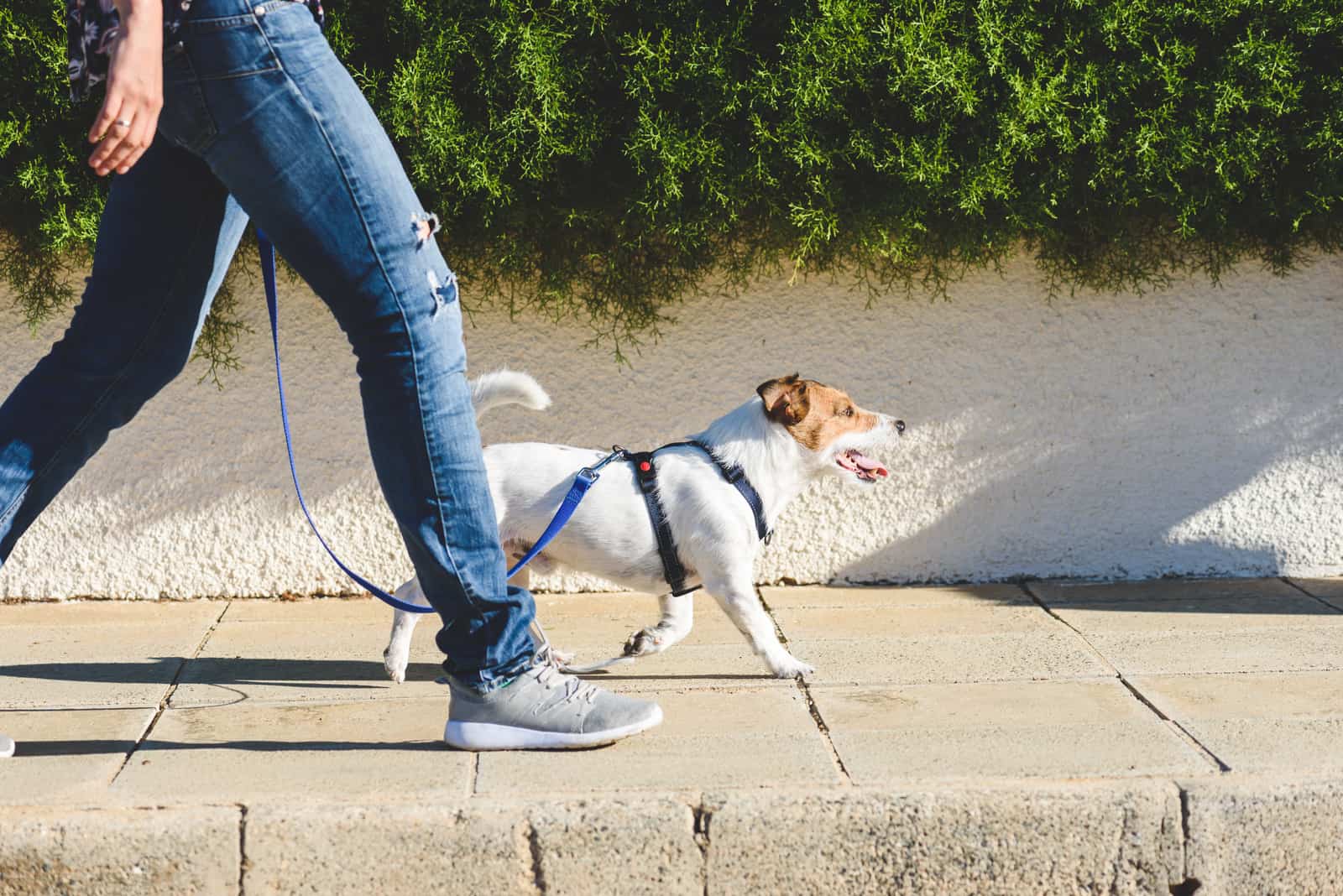
You can take your dog out for a walk after cutting the quick only after you’ve ensured that the bleeding from the dog’s paw has completely stopped.
First-time dog owners usually get very scared when they cut their dog’s nails too short. Many of them decide not to take their dog out. But, is dog walking after cutting the quick really that dangerous?
Well, it depends on the cut on your dog’s paw.
Before taking your doggie out, you should provide all the necessary care to the nail that you cut too short. Let your dog rest to make sure the wound dries well. After a while, observe the way your dog is walking around the house.
In case you don’t notice any issue in walking, you can take your dog outside for a walk.
A change in plans comes when your dog refuses to walk or go out at all. This may or may not be connected to a broken nail or a damaged nail quick.
If you notice difficulties in walking, such as limping, sometimes followed by yelping and licking the affected foot, it’s best to spare your dog from walking and any other activity.
If your dog is cooperative and calm, lift its paw up gently and inspect for any cuts, wounds, and other tissue damage. Sometimes, they can get a piece of thick grass or a piece of wood stuck in their little paw pads.
In this case, you should visit your veterinarian to determine what the problem is, and make sure your dog can go out on a walk again.
Broken nail or nails too short?
Keep in mind that limping won’t always be the case of a nail that has been cut too short. Limping can occur in dogs with broken nails.
You might not notice this at first, but constant licking and limping, as well as walking sideways, is a good sign for you to check your dog’s paw.
Breaking a nail or two isn’t unusual in the doggie world. Our little companions love running around and digging holes. So, a dog’s nail breaks quite often, and that’s usually nothing to be worried about.
Not all nails break the same. Many dog owners have noticed that the dog’s nails that break more often than others are the dew claws. This is probably because of their specific placement on the dog’s paw.
Broken nails usually won’t bleed as much as those that had their quick cut. A dog’s nail can break on its tip, but it can also break near its root. If the lower parts of the dog’s nail are broken, you will have to take your dog to the vet.
This is because the root of the broken nail won’t heal by itself, and no home remedies can help as much as a bandage and medication that your doggie will get from the veterinarian.
Keep in mind that every minor injury can become a serious injury if not treated in time.
I Cut My Dog! Help!
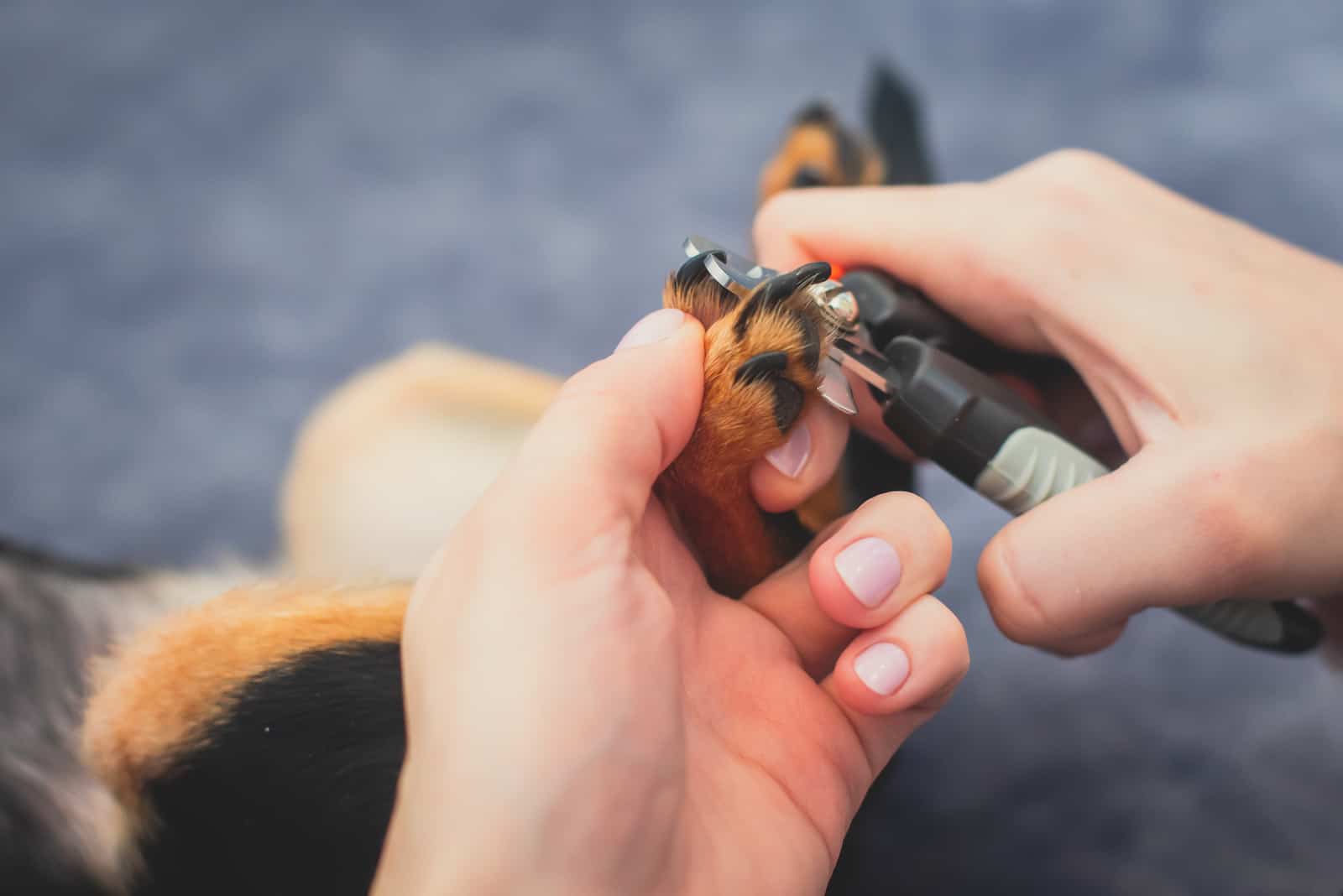
So, you were cutting your dog’s toenails and everything was going smoothly, but all of a sudden, you hear a loud yelp! Not sure what happened, you check your dog’s paw to see if you accidentally cut it.
You see a large amount of blood coming out of one nail. At this point, you’re already starting to freak out.
The first thing that you should do is – don’t panic!
We’ve all been there, and we know how bad you’re already feeling for accidentally cutting your dog’s nail too short.
Is the dog’s nail quick bleeding too much?
Let’s go back to the part where we said that the quick is rich in blood supply. This means that a small cut will make it bleed quite a lot. The quick is bleeding quickly… and profusely.
You have probably cut your own finger one time, and you’ve probably noticed the ridiculous amount of blood that came out from a small cut. It’s the same with dog nails.
Even though it might seem like a lot, your dog cannot in any way bleed to death from its damaged nail quick.
So, keep it together because your dog won’t bleed forever!
Here’s what to do!
Dog Nail Bleeding: Home Remedies
If you were cutting your dog’s nails at home with a pair of dog nail clippers, it’s possible that you may have cut into the nail quick. You’d be surprised how many at-home supplies you can use for first-aid.
But, before you take any action, make sure your dog isn’t in pain and can remain still. If your doggie is yelping and there is no way you can get to its paw, take it to the vet as soon as possible.
Bear in mind that the normal clotting time for dogs is usually 60 to 120 seconds. This means it’s good to leave the cut as it is for a few seconds before aiding it.
What this also means is that if the bleeding lasts for more than a few minutes, you should take your doggie to the vet.
If your dog is cooperative and you figured the damage is not as bad as it looks, proceed with the at-home, first-aid process.
Your first task is to make the bleeding stop by applying pressure to the affected area, which will support the coagulation (blood clot forming) process.
Use cornstarch
Did you know that cornstarch isn’t only used in yummy meals you make at home?
Well, cornstarch can be used in treating your dog’s paw. This is something you’ll surely have lying somewhere in your kitchen. There are two ways you can use cornstarch.
Grab some cornstarch and pat it thoroughly on the affected area. The powdery cornstarch will support the clotting process, making the bleeding stop quicker.
Another way is to fill a container (usually a wide glass or bowl) with cornstarch. Then, take your dog’s paw and dip it into the powder. Make sure the whole affected surface is covered.
In case you don’t have any cornstarch around, you can also use baking soda and plain flour.
Use styptic powder
Veterinarians and groomers often use styptic powder to stop the bleeding from smaller wounds. This powder acts as a fast clotting agent. It’s always a good idea to have it in your household.
Another name that’s commonly used for this powder is kwik-stop or quick stop powder. It is possible to buy it without a prescription. This powder can be bought in licensed pet stores and veterinary pharmacies. You can also get it from Amazon.
Styptic powder is both a coagulant and an antiseptic agent. This means that not only does it stop the bleeding, but it also prevents and stops microorganisms, such as bacteria, from spreading further into the bloodstream.
How to apply styptic powder
To apply styptic powder to your dog’s paw, simply wet your finger with water and get some of the powder to stick to it. Then, lift up your dog’s paw and spread the powder around the affected area.
Beware that this powder might sting when applied initially to the cut, and your dog might not feel very comfortable. It might yelp and try to get its paw away from you.
So, make sure you distract your doggie with either a kong or a toy that they’ll get busy with. It’s also important to include a treat after the process has been done.
It’s best to let your dog rest while waiting for the powder to start working. Walking and running should be avoided in the first hour after applying the kwik-stop.
If you fail to apply the styptic powder to your dog’s paw, fear not! You can always call your veterinarian or your dog groomer to help you out.
Styptic pencil
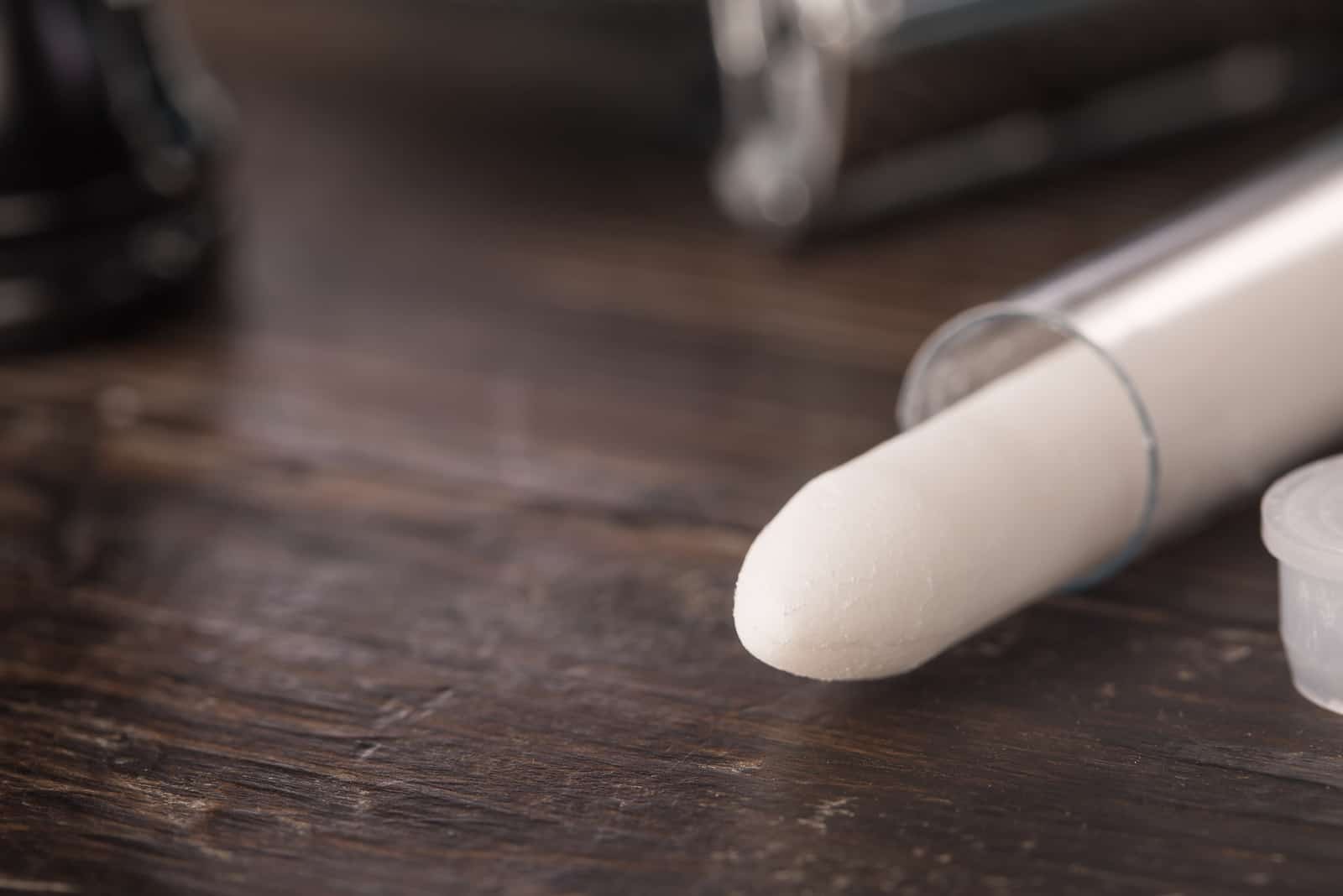
Another way to stop the bleeding is by using a styptic pencil. This works the same as the styptic powder – it’s only packaged differently. It’s also used for smaller cuts.
To use the styptic pencil, you’ll need to dip the tip into clean water and simply apply the agent to the affected area.
Just like the styptic powder, it will sting a bit, so be prepared because your dog will react to the stinging. A dog’s toenails are filled with nerves, and it’s normal for a small cut in this region to hurt.
The styptic pencil can be bought in all licensed pet stores, as well as veterinary pharmacies and Amazon.
Bar of soap
This is an item you surely have at home. This method works well with smaller cuts and minimum bleeding. But, it might not work as well with larger cuts.
Take a bar of soap and moisten it up until it gets soft. Then, simply apply it to the affected area. You can either put the whole bar of soap directly on your dog’s paw, or cut the soap into smaller pieces so that it’s easier to handle.
Liquid soap won’t work, so make sure to stick to a bar of soap.
Super glue
This should be your last resort if you don’t have any previously mentioned items anywhere around.
Super glue dries out quickly creating a solid layer that feels somewhat plastic-like. This can be useful in stopping the bleeding from your dog’s paw.
When applying super glue, it’s important not to overdo it. One to two drops will do the trick.
As it will not sting, your dog won’t feel the need to lick the affected area, nor will it react in any painful way.
How applying pressure helps stop bleeding
Whatever method you decide to use to stop your dog’s quick from bleeding, make sure to always apply pressure to the affected area.
Now, by applying pressure, I don’t mean putting all of your force into it. Simply use a clean paper towel or a clean gauze and put it on the open wound, pressing firmly with your fingers.
This will help slow down, and even stop the blood flow around the cut. By stopping the blood flow, the coagulation process will be faster, making the bleeding stop sooner.
Make sure to always use clean items when dealing with open cuts and wounds. You don’t want to contaminate the wound and make a minor problem become a bigger one.
Find The Nail Quick
No, I’m not telling you to quickly point to your dog’s nails. Although you can do that and tell your doggie that he’s the best dog ever.
But, what I want you to do is find out how to identify a dog’s nail quick. Mind you, this can be a bit tricky, even for dog groomers and veterinarians!
Doggies come in different colors – so do their nails. We usually see white and black nails. Sometimes, a dog’s toenails are bicolored.
White nails
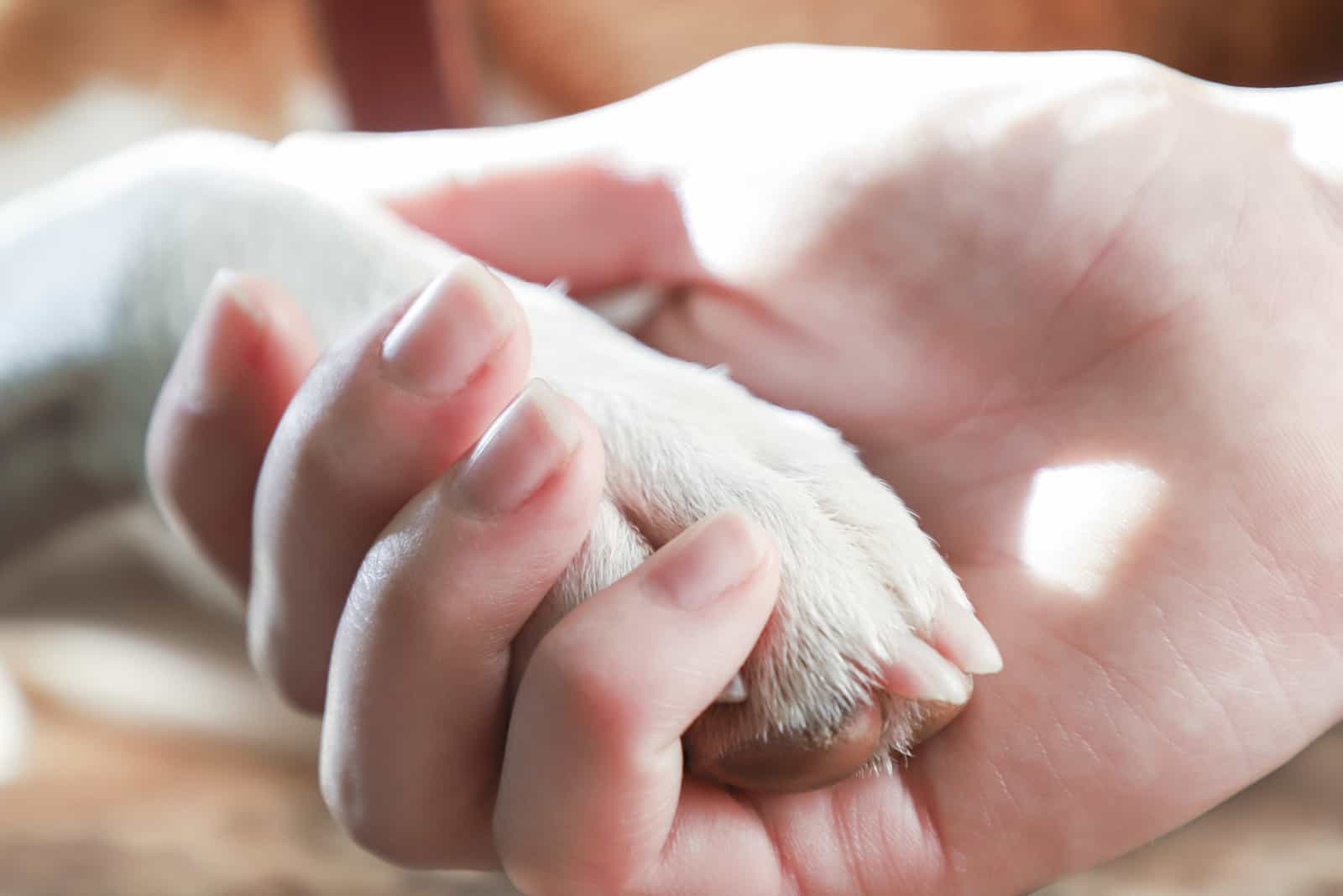
Spotting the quick in white dog’s nails is relatively easy. When you take your dog’s paw, look closely at the nail bed.
The nail quick will be pink in color. A way to clearly see it is to put your dog’s paw under a source of light.
You’ll notice that the tip of the nail will be more of a solid white color than the rest of the nail that might seem transparent. This solid white tip of the nail is the part you’ll aim to cut off.
Black nails
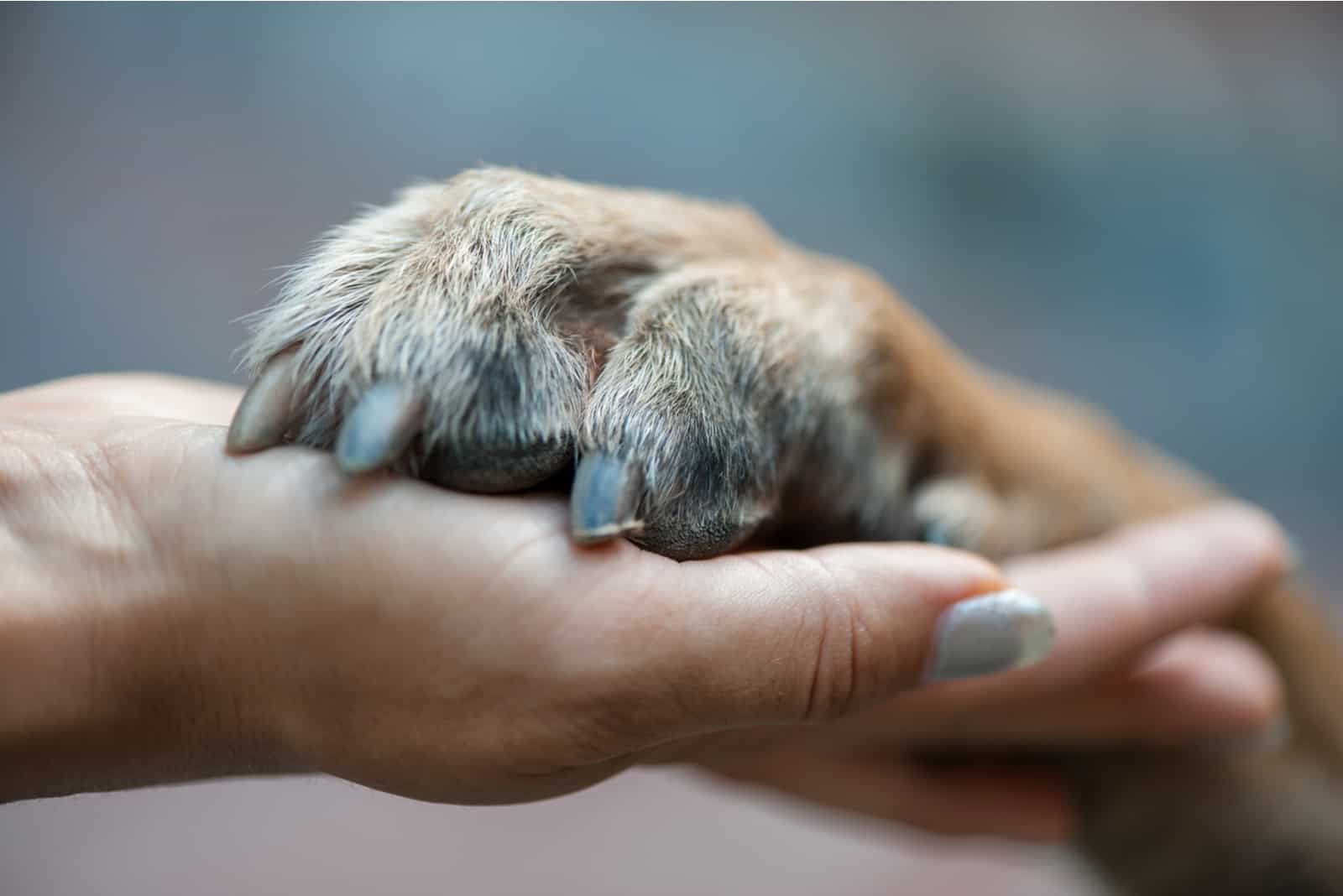
This is where it gets a bit complicated. Cutting and trimming a dog’s black nail will probably take you a few tries.
To identify the quick in black nails, you’ll have to take your dog’s paw and look closely at the underside of your dog’s nails. You’ll see a lighter, almost grayish area that will be the nail quick. The tip of the nail is far darker than this area.
Another way to visualize the quick is during nail trimming. Start off by trimming a small part and look at the nail after every clip you make. You’ll notice the inside of the nail becoming lighter in color.
Once you see a shiny, grayish area, you should stop trimming the nail. Any further trimming increases the chance of cutting the nail quick and making your dog bleed.
You can use basic dog nail trimmers to cut off the tip of the nail. If you don’t feel safe using dog nail trimmers, you can opt for a dog nail grinder or a dremel to give your pooch a safe manicure.
Final Thoughts
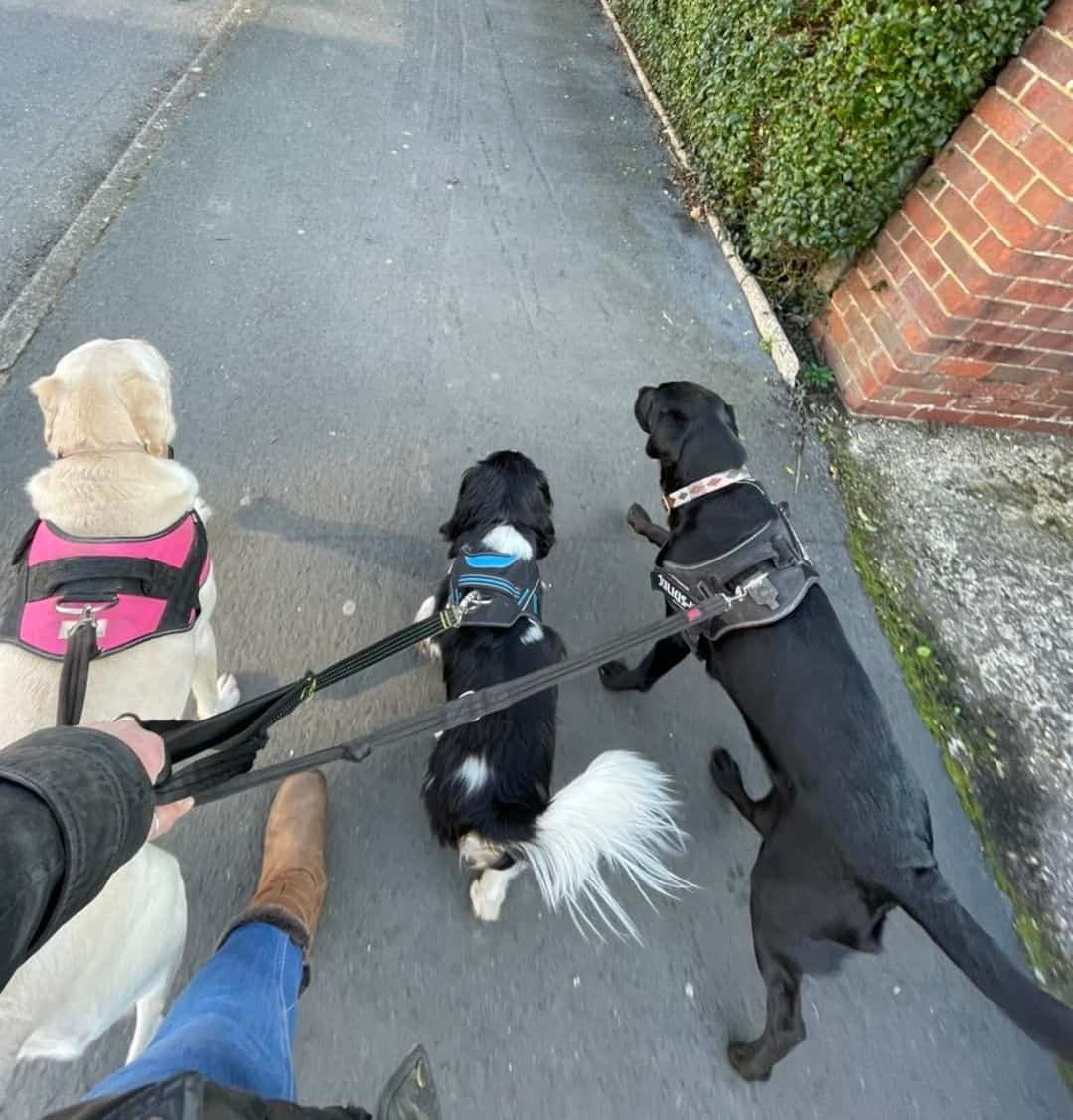
Photo from: @alphadogspetsitting01
Dog grooming can be both a great experience and a nightmare. In case of a quick that has been accidentally cut, it’s important to stay cool and not panic.
So, to answer the question, “Can I walk my dog after cutting the quick? – if you cut the nail quick, you should be able to walk your dog, but you’ll need to take care of the wound.
You can always use doggie bandages that will act as a physical barrier between the fragile, affected area and the dirt from the ground. That way, your dog’s paw is protected and safe from contamination.
If you notice any difficulty in dog walking, as well as a stubborn wound that takes ages to heal, it’s best to contact your veterinarian.
I hope you found this article to help you calm down during an accident like cutting your dog’s nail quick.
The most important thing to do in a situation like this is to keep your head cool and provide your dog with all the necessary care, love, and lots of treats!
Read Next:
• Can I Buy My Dog A Seat On An Airplane? Flying With Pets Guide
• How Often Do You Walk Your Dog? Learn The Desirable Frequency
